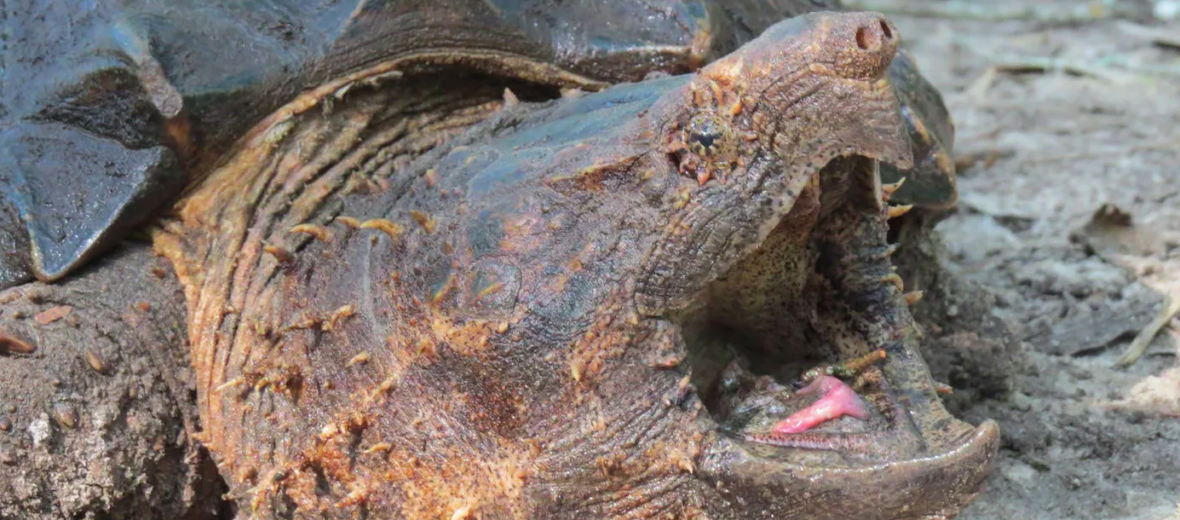
The alligator snapping turtle is touted as being 1 of the biggest and heaviest freshwater turtles in the world. In case you were wondering, the largest is the Yangtze giant softshell turtle. You can find these prehistoric looking beasts throughout the southeastern United States. They prefer canals, lakes, and rivers. Due to habitat destruction, pollution, hunting and trapping for their meat and for the pet trade, as well as pesticide accumulation, these critters are listed as Vulnerable by the IUCN.
First the Stats…
Scientific name: Macrochelys temminckii
Weight: Up to 175 lbs.
Length: Up to 29 inches
Lifespan: Up to 70 years
Now on to the Facts!
1.) These critters spend nearly their entire lives under water. They only surface to breathe and to sun themselves, when needed. Females will venture to land to lay eggs.
2.) They are primarily nocturnal (active at night). They can, at times exhibit diurnal (active during the day) activity.
3.) Due to their inactivity, algae tends to grow on their carapace (shell). This aids in camouflaging them almost completely.
4.) A group of turtles is called a bale, creep, dole, nest, or turn.
5.) The alligator snapping turtle preys on fish, fish carcasses, mollusks, carrion (dead animals), amphibians, snakes, crayfish, worms, water birds, aquatic plants, other turtles, and occasionally even juvenile alligators.
But wait, there’s more on the alligator snapping turtle!
6.) These snapping turtles are polygynandrous (promiscuous – males and females mate with several partners).
7.) After copulation, the female will become gravid (pregnant) for up to 140 days. After which time she will lay up to 50 eggs that hatch in up to 140 days.
Did you know…?
These turtles can stay submerged for up to 50+ minutes at a time.
8.) Snapping turtles have temperature-dependent sex determination. Eggs kept at 68°F produce only females. Eggs kept at 70 – 72°F produce both male and female turtles. Those incubated at 73 – 75°F produce only males.
9.) Like other reptiles, the hatchlings are born precocial (self sufficient at birth).
10.) These turtles reach sexual maturity at around 12 years of age.
Now a Short Alligator Snapping Turtle Video!
Be sure to share & comment below! Also, check out the Critter Science YouTube channel. Videos added frequently!
Want to suggest a critter for me to write about? Let me know here.



